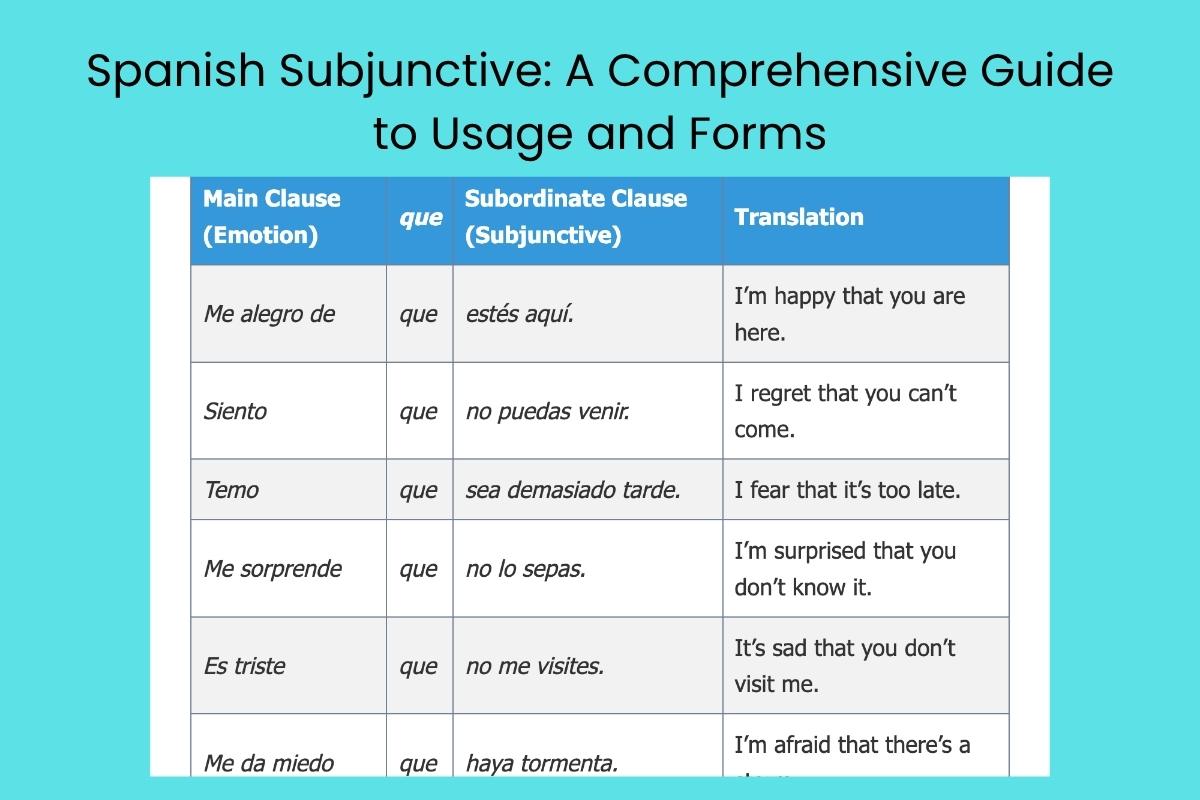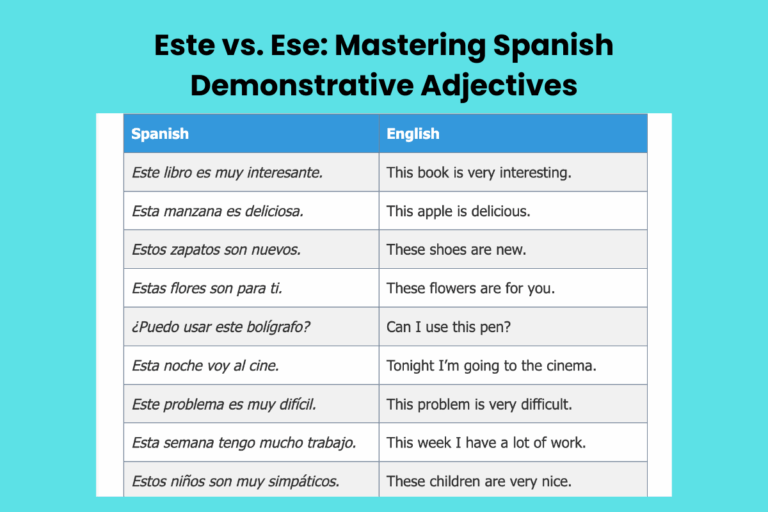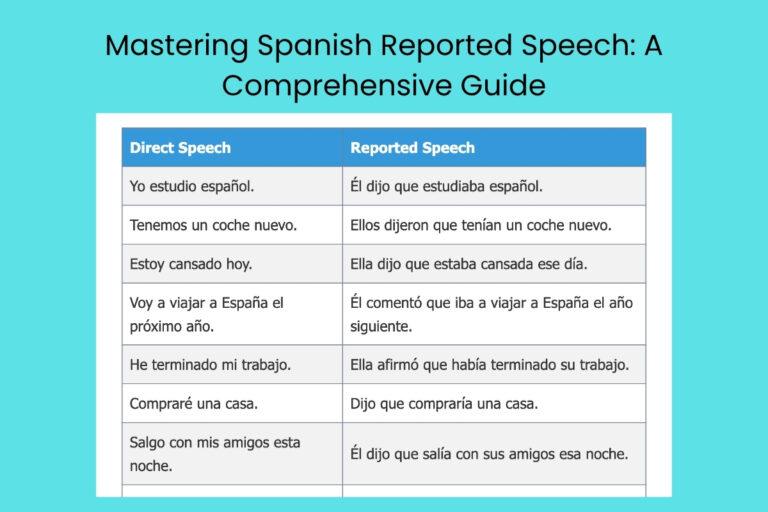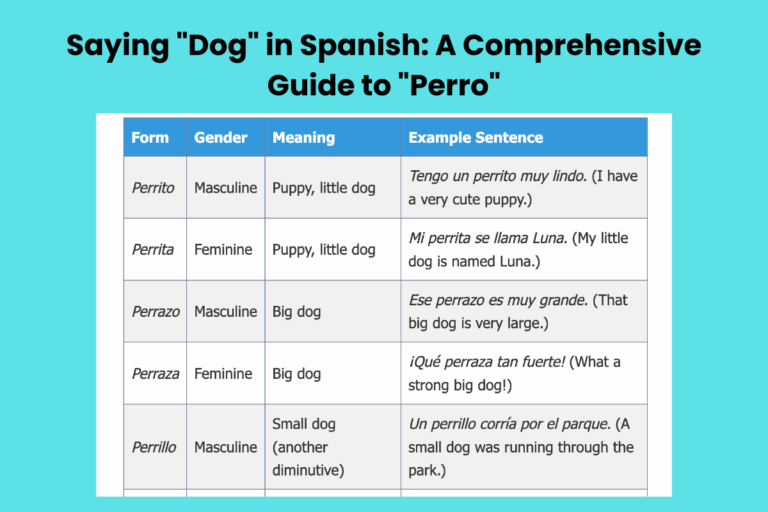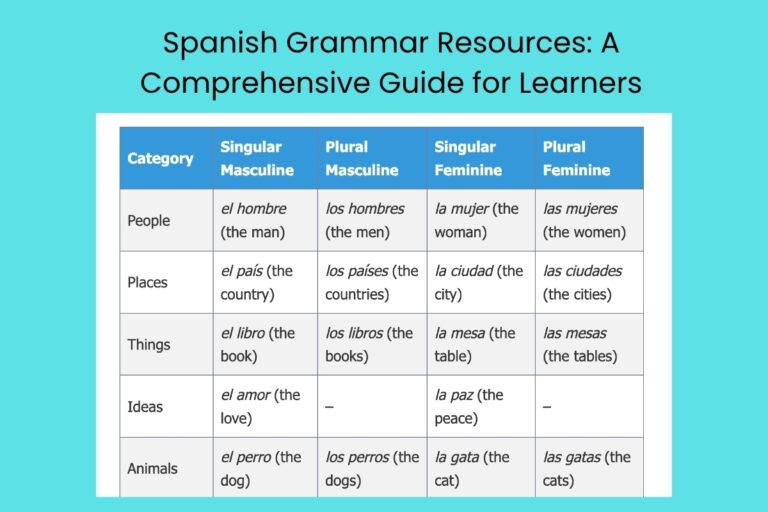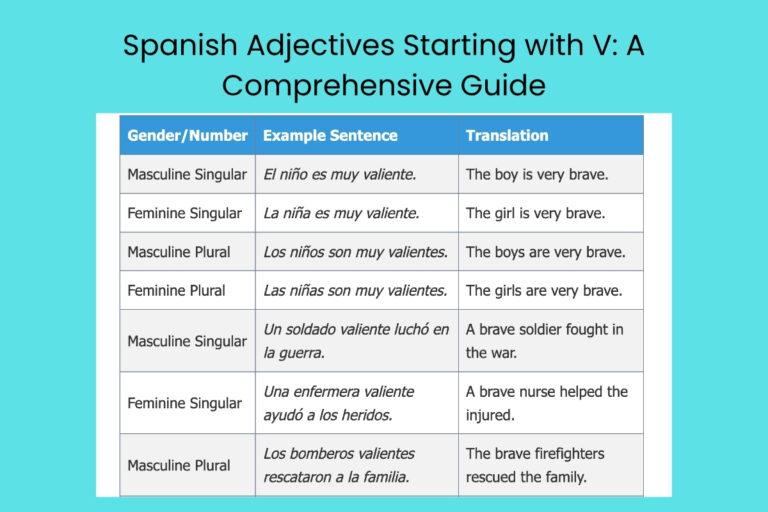Spanish Subjunctive: A Comprehensive Guide to Usage and Forms
The Spanish subjunctive mood is a grammatical concept that often challenges English speakers. Unlike the indicative mood, which expresses facts and objective reality, the subjunctive expresses subjectivity, doubt, desire, emotion, and other non-factual states.
Mastering the subjunctive is crucial for achieving fluency and conveying nuanced meanings in Spanish. This guide provides a thorough exploration of the subjunctive mood, covering its definition, structure, various uses, and common pitfalls.
Whether you’re a beginner or an advanced learner, this article will equip you with the knowledge and practice needed to confidently navigate the complexities of the Spanish subjunctive.
Table of Contents
- Definition of the Spanish Subjunctive
- Structural Breakdown of the Subjunctive
- Formation of the Subjunctive
- Uses of the Spanish Subjunctive
- Examples of the Spanish Subjunctive
- Usage Rules of the Spanish Subjunctive
- Common Mistakes with the Subjunctive
- Practice Exercises
- Advanced Topics
- Frequently Asked Questions
- Conclusion
Definition of the Spanish Subjunctive
The subjunctive mood (el subjuntivo) in Spanish is a verb mood that expresses subjective, hypothetical, or emotional states rather than objective facts. It is used in dependent clauses, typically introduced by conjunctions like que (that), si (if), para que (so that), and a menos que (unless). Unlike the indicative mood, which describes what is, the subjunctive describes what someone wants, doubts, fears, or hopes for.
The subjunctive is not a tense but a mood. It exists in different tenses, such as the present subjunctive, imperfect subjunctive, perfect subjunctive, and pluperfect subjunctive.
Each tense is used in specific contexts to convey different shades of meaning.
The main function of the subjunctive is to express subjectivity. This includes a wide range of situations, such as expressing desires, doubts, emotions, opinions, and possibilities.
It is also used in certain types of clauses, such as those expressing purpose, condition, or concession. The use of the subjunctive often depends on the verb or expression in the main clause of the sentence.
Certain verbs and expressions, known as “trigger verbs,” require the use of the subjunctive in the subordinate clause.
Structural Breakdown of the Subjunctive
The subjunctive mood typically appears in subordinate clauses, which are clauses that depend on a main clause for their meaning. The most common structure involves a “trigger” in the main clause that necessitates the use of the subjunctive in the subordinate clause.
This structure is often referred to as the “WEIRDO” structure, an acronym that helps remember the main categories of triggers: Wishes, Emotions, Impersonal expressions, Recommendations, Doubt, and Ojalá.
The basic structure is as follows:
Main Clause (Trigger) + que + Subordinate Clause (Subjunctive)
For example:
Quiero que vengas. (I want you to come.)
In this sentence, quiero (I want) is the trigger in the main clause, and vengas (you come) is the subjunctive verb in the subordinate clause.
The conjunction que is essential in connecting the main and subordinate clauses. However, other conjunctions can also introduce subjunctive clauses, depending on the specific meaning being conveyed. These include para que (so that), a fin de que (in order that), a menos que (unless), en caso de que (in case that), antes de que (before), sin que (without), and con tal de que (provided that).
Formation of the Subjunctive
The formation of the subjunctive mood varies depending on the tense. Here’s a breakdown of the most common subjunctive tenses:
Present Subjunctive
The present subjunctive is formed by taking the yo form of the present indicative, dropping the -o ending, and adding the subjunctive endings. For -ar verbs, the endings are -e, -es, -e, -emos, -éis, -en.
For -er and -ir verbs, the endings are -a, -as, -a, -amos, -áis, -an.
Regular Verb Endings:
- -ar verbs: -e, -es, -e, -emos, -éis, -en
- -er and -ir verbs: -a, -as, -a, -amos, -áis, -an
Examples:
- Hablar (to speak): hable, hables, hable, hablemos, habléis, hablen
- Comer (to eat): coma, comas, coma, comamos, comáis, coman
- Vivir (to live): viva, vivas, viva, vivamos, viváis, vivan
Stem-changing verbs and irregular verbs follow similar patterns but have some variations. For example, verbs like pensar (to think) and volver (to return) have stem changes in the present subjunctive.
Imperfect Subjunctive
The imperfect subjunctive has two forms, both of which are equally correct and interchangeable. To form the imperfect subjunctive, take the third-person plural (ellos/ellas/ustedes) form of the preterite tense, drop the -ron ending, and add the imperfect subjunctive endings.
The two sets of endings are -ra, -ras, -ra, -ramos, -rais, -ran and -se, -ses, -se, -semos, -seis, -sen.
Regular Verb Endings:
- -ra form: -ra, -ras, -ra, -ramos, -rais, -ran
- -se form: -se, -ses, -se, -semos, -seis, -sen
Examples:
- Hablar (to speak): hablara/hablase, hablaras/hablases, hablara/hablase, habláramos/hablásemos, hablarais/hablaseis, hablaran/hablasen
- Comer (to eat): comiera/comiese, comieras/comieses, comiera/comiese, comiéramos/comiésemos, comierais/comieseis, comieran/comiesen
- Vivir (to live): viviera/viviese, vivieras/vivieses, viviera/viviese, viviéramos/viviésemos, vivierais/vivieseis, vivieran/viviesen
Future Subjunctive (Rare)
The future subjunctive (el futuro de subjuntivo) is rarely used in modern Spanish. You’ll mostly encounter it in legal or formal documents. It is formed by taking the stem of the infinitive and adding the following endings: -are, -ares, -are, -áremos, -areis, -aren.
Regular Verb Endings: -are, -ares, -are, -áremos, -areis, -aren
Examples:
- Hablar (to speak): hablare, hablares, hablare, habláremos, hablareis, hablaren
- Comer (to eat): comiere, comieres, comiere, comiéremos, comiereis, comieren
- Vivir (to live): vivire, vivieres, vivire, viviéremos, vivireis, vivieren
Perfect Subjunctive
The perfect subjunctive (el pretérito perfecto de subjuntivo) is a compound tense formed with the auxiliary verb haber in the present subjunctive + the past participle of the main verb.
Formula: Haber (present subjunctive) + Past Participle
Examples:
- Haber (present subjunctive): haya, hayas, haya, hayamos, hayáis, hayan
- Hablar (to speak): haya hablado, hayas hablado, haya hablado, hayamos hablado, hayáis hablado, hayan hablado
- Comer (to eat): haya comido, hayas comido, haya comido, hayamos comido, hayáis comido, hayan comido
Pluperfect Subjunctive
The pluperfect subjunctive (el pluscuamperfecto de subjuntivo) is a compound tense formed with the auxiliary verb haber in the imperfect subjunctive + the past participle of the main verb. Like the imperfect subjunctive, it also has two forms. Both are equally valid.
Formula: Haber (imperfect subjunctive) + Past Participle
Examples:
- Haber (imperfect subjunctive): hubiera/hubiese, hubieras/hubieses, hubiera/hubiese, hubiéramos/hubiésemos, hubierais/hubieseis, hubieran/hubiesen
- Hablar (to speak): hubiera hablado/hubiese hablado, hubieras hablado/hubieses hablado, hubiera hablado/hubiese hablado, hubiéramos hablado/hubiésemos hablado, hubierais hablado/hubieseis hablado, hubieran hablado/hubiesen hablado
- Comer (to eat): hubiera comido/hubiese comido, hubieras comido/hubieses comido, hubiera comido/hubiese comido, hubiéramos comido/hubiésemos comido, hubierais comido/hubieseis comido, hubieran comido/hubiesen comido
Uses of the Spanish Subjunctive
The subjunctive mood is used in various contexts to express subjectivity, doubt, emotion, and other non-factual states.
Wishes and Desires
The subjunctive is used to express wishes and desires, often with verbs like querer (to want), desear (to desire), and esperar (to hope). The word ojalá (hopefully) always triggers the subjunctive.
Examples:
- Quiero que vengas a mi fiesta. (I want you to come to my party.)
- Deseo que tengas un buen día. (I wish you have a good day.)
- Espero que te guste mi regalo. (I hope you like my gift.)
- Ojalá que llueva mañana. (Hopefully, it rains tomorrow.)
Emotion
The subjunctive is used to express emotions, such as happiness, sadness, anger, and surprise, often with verbs like alegrarse (to be happy), sentir (to regret), temer (to fear), and sorprenderse (to be surprised).
Examples:
- Me alegro de que estés aquí. (I’m happy that you are here.)
- Siento que no puedas venir. (I regret that you can’t come.)
- Temo que sea demasiado tarde. (I fear that it’s too late.)
- Me sorprende que no lo sepas. (I’m surprised that you don’t know it.)
Doubt and Uncertainty
The subjunctive is used to express doubt and uncertainty, often with verbs like dudar (to doubt), no creer (to not believe), no estar seguro (to not be sure), and expressions like es posible que (it’s possible that) and es probable que (it’s probable that).
Examples:
- Dudo que sea verdad. (I doubt that it’s true.)
- No creo que venga. (I don’t believe he’s coming.)
- No estoy seguro de que lo sepa. (I’m not sure that he knows it.)
- Es posible que llueva mañana. (It’s possible that it will rain tomorrow.)
Influence and Recommendation
The subjunctive is used to express influence, recommendations, and commands, often with verbs like recomendar (to recommend), sugerir (to suggest), insistir (to insist), pedir (to ask), and mandar (to order).
Examples:
- Recomiendo que leas este libro. (I recommend that you read this book.)
- Sugiero que vayas al médico. (I suggest that you go to the doctor.)
- Insisto en que lo hagas. (I insist that you do it.)
- Pido que me ayudes. (I ask that you help me.)
- Mando que te calles. (I order you to be quiet.)
Negation and Non-Existence
The subjunctive is used after expressions of negation or non-existence, particularly when referring to indefinite or hypothetical subjects.
Examples:
- No hay nadie que pueda hacerlo. (There is no one who can do it.)
- No conozco a nadie que hable japonés. (I don’t know anyone who speaks Japanese.)
- No encuentro nada que me guste. (I can’t find anything that I like.)
Impersonal Expressions
The subjunctive is used after impersonal expressions that express opinions, judgments, or possibilities. Common impersonal expressions include es importante que (it’s important that), es necesario que (it’s necessary that), es bueno que (it’s good that), and es mejor que (it’s better that).
Examples:
- Es importante que estudies. (It’s important that you study.)
- Es necesario que llegues a tiempo. (It’s necessary that you arrive on time.)
- Es bueno que hagas ejercicio. (It’s good that you exercise.)
- Es mejor que te quedes en casa. (It’s better that you stay home.)
Adverbial Clauses
The subjunctive is used in adverbial clauses introduced by certain conjunctions that express purpose, condition, time, or concession. Common conjunctions include para que (so that), a fin de que (in order that), a menos que (unless), en caso de que (in case that), antes de que (before), sin que (without), and con tal de que (provided that).
Examples:
- Lo hago para que estés contento. (I do it so that you are happy.)
- Te llamaré a menos que esté ocupado. (I will call you unless I am busy.)
- Llámame antes de que te vayas. (Call me before you leave.)
- No puedes entrar sin que tengas permiso. (You can’t enter without having permission.)
Relative Clauses
The subjunctive is used in relative clauses when the antecedent (the noun the clause modifies) is indefinite, hypothetical, or non-existent.
Examples:
- Busco un libro que sea interesante. (I’m looking for a book that is interesting.) [Indefinite]
- Necesito un amigo que me ayude. (I need a friend who helps me.) [Hypothetical]
- No hay nadie que pueda resolver este problema. (There is no one who can solve this problem.) [Non-existent]
Examples of the Spanish Subjunctive
Here are more examples of the subjunctive in various contexts, organized into tables for better clarity.
Table 1: Subjunctive with Verbs of Emotion
This table presents examples of how the subjunctive is used to express emotion, using various trigger verbs.
| Main Clause (Emotion) | que | Subordinate Clause (Subjunctive) | Translation |
|---|---|---|---|
| Me alegro de | que | estés aquí. | I’m happy that you are here. |
| Siento | que | no puedas venir. | I regret that you can’t come. |
| Temo | que | sea demasiado tarde. | I fear that it’s too late. |
| Me sorprende | que | no lo sepas. | I’m surprised that you don’t know it. |
| Es triste | que | no me visites. | It’s sad that you don’t visit me. |
| Me da miedo | que | haya tormenta. | I’m afraid that there’s a storm. |
| Me enoja | que | llegues tarde. | It angers me that you arrive late. |
| Me frustra | que | no me entiendas. | It frustrates me that you don’t understand me. |
| Me gusta | que | seas tan amable. | I like that you are so kind. |
| Me encanta | que | cocines tan bien. | I love that you cook so well. |
| Me molesta | que | hables tan alto. | It bothers me that you speak so loudly. |
| Me fastidia | que | no me escuches. | It annoys me that you don’t listen to me. |
| Me preocupa | que | estés enfermo. | I’m worried that you are sick. |
| Me tranquiliza | que | estés bien. | It reassures me that you are well. |
| Me irrita | que | seas tan terco. | It irritates me that you are so stubborn. |
| Me asusta | que | conduzcas tan rápido. | It scares me that you drive so fast. |
| Me divierte | que | cuentes chistes. | It amuses me that you tell jokes. |
| Me aburre | que | hables de política. | It bores me that you talk about politics. |
| Me entristece | que | te vayas. | It saddens me that you are leaving. |
| Me da vergüenza | que | hagas eso. | I’m embarrassed that you do that. |
Table 2: Subjunctive with Verbs of Doubt and Uncertainty
This table provides examples of the subjunctive being used in sentences expressing doubt or uncertainty.
| Main Clause (Doubt/Uncertainty) | que | Subordinate Clause (Subjunctive) | Translation |
|---|---|---|---|
| Dudo | que | sea verdad. | I doubt that it’s true. |
| No creo | que | venga. | I don’t believe he’s coming. |
| No estoy seguro de | que | lo sepa. | I’m not sure that he knows it. |
| Es posible | que | llueva mañana. | It’s possible that it will rain tomorrow. |
| Es improbable | que | ganemos el partido. | It’s unlikely that we will win the game. |
| No pienso | que | tenga razón. | I don’t think he’s right. |
| Quizás | venga más tarde. | Maybe he will come later. | |
| Tal vez | podamos ir. | Perhaps we can go. | |
| No es cierto | que | haya un fantasma. | It’s not true that there’s a ghost. |
| No es evidente | que | sea fácil. | It’s not evident that it’s easy. |
| No es obvio | que | esté mintiendo. | It’s not obvious that he’s lying. |
| No parece | que | quiera ayudar. | It doesn’t seem that he wants to help. |
| Ignoro | si | venga o no. | I don’t know if he’s coming or not. |
| Desconozco | si | tenga el dinero. | I don’t know if he has the money. |
| No se sabe | si | vayan a venir. | It’s not known if they are going to come. |
| Es dudoso | que | sea verdad. | It’s doubtful that it’s true. |
| Pongo en duda | que | sea capaz. | I doubt that he is capable. |
| No niego | que | sea difícil. | I don’t deny that it’s difficult. (Note: This is a nuance; denying something *isn’t* a fact requires subjunctive) |
| No confirmo | que | sea cierto. | I don’t confirm that it’s true. |
| No aseguro | que | lo haga. | I don’t assure that he will do it. |
Table 3: Subjunctive with Impersonal Expressions
This table illustrates the use of the subjunctive with impersonal expressions that convey opinions or judgments.
| Impersonal Expression | que | Subordinate Clause (Subjunctive) | Translation |
|---|---|---|---|
| Es importante | que | estudies. | It’s important that you study. |
| Es necesario | que | llegues a tiempo. | It’s necessary that you arrive on time. |
| Es bueno | que | hagas ejercicio. | It’s good that you exercise. |
| Es mejor | que | te quedes en casa. | It’s better that you stay home. |
| Es fundamental | que | comprendas esto. | It’s fundamental that you understand this. |
| Es esencial | que | seas puntual. | It’s essential that you are punctual. |
| Es imprescindible | que | tengas paciencia. | It’s indispensable that you have patience. |
| Es aconsejable | que | pidas ayuda. | It’s advisable that you ask for help. |
| Es preferible | que | vayas solo. | It’s preferable that you go alone. |
| Es urgente | que | lo hagas ahora. | It’s urgent that you do it now. |
| Es conveniente | que | hables con él. | It’s advisable that you talk to him. |
| Es una lástima | que | no puedas venir. | It’s a shame that you can’t come. |
| Es una pena | que | esté lloviendo. | It’s a pity that it’s raining. |
| Es sorprendente | que | no lo supieras. | It’s surprising that you didn’t know it. |
| Es increíble | que | hayas logrado eso. | It’s incredible that you have achieved that. |
| Es raro | que | no haya llamado. | It’s strange that he hasn’t called. |
| Es curioso | que | no sepas eso. | It’s curious that you don’t know that. |
| Es lógico | que | pienses así. | It’s logical that you think that way. |
| Es natural | que | te sientas así. | It’s natural that you feel that way. |
| Es posible | que | lleguemos tarde. | It’s possible that we will arrive late. |
Table 4: Subjunctive with Adverbial Conjunctions
This table demonstrates the usage of the subjunctive in adverbial clauses, introduced by various conjunctions.
| Adverbial Conjunction | Clause (Subjunctive) | Main Clause | Translation |
|---|---|---|---|
| Para que | estés contento, | lo hago. | I do it so that you are happy. |
| A fin de que | entiendas, | te lo explico. | I explain it to you in order that you understand. |
| A menos que | esté ocupado, | te llamaré. | I will call you unless I am busy. |
| En caso de que | llueva, | lleva un paraguas. | In case it rains, take an umbrella. |
| Antes de que | te vayas, | llámame. | Call me before you leave. |
| Sin que | tengas permiso, | no puedes entrar. | You can’t enter without having permission. |
| Con tal de que | me ayudes, | te daré el dinero. | Provided that you help me, I will give you the money. |
| Aunque | sea difícil, | lo intentaré. | Even if it’s difficult, I will try. (Subjunctive used when the outcome is uncertain) |
| Cuando | tengas tiempo, | visítame. | Visit me when you have time. (Subjunctive used when the time is in the future) |
| Hasta que | termines, | no te irás. | You won’t leave until you finish. |
| Tan pronto como | llegues, | avísame. | Let me know as soon as you arrive. |
| Siempre que | necesites ayuda, | puedes contar conmigo. | Whenever you need help, you can count on me. |
| A pesar de que | sea caro, | lo compraré. | Even though it’s expensive, I will buy it. |
| En cuanto | puedas, | hazlo. | As soon as you can, do it. |
| Dondequiera que | vayas, | te seguiré. | Wherever you go, I will follow you. |
| Como si | fuera rico, | gasta mucho dinero. | He spends a lot of money as if he were rich. |
| Por si | acaso llueva, | lleva un paraguas. | Just in case it rains, take an umbrella. |
Usage Rules of the Spanish Subjunctive
Understanding the specific rules that govern subjunctive usage is crucial for mastering this mood. Here are some key rules to keep in mind:
- Subjunctive in Subordinate Clauses: The subjunctive is generally used in subordinate clauses that are dependent on a main clause containing a “trigger” verb or expression.
- Trigger Verbs: Certain verbs and expressions consistently trigger the subjunctive in the subordinate clause. These include verbs of desire (querer, desear), emotion (alegrarse, temer), doubt (dudar, no creer), influence (recomendar, sugerir), and impersonal expressions (es importante, es necesario).
- Que Connection: The subjunctive clause is often connected to the main clause by the conjunction que. However, other conjunctions such as para que, a menos que, and antes de que can also introduce subjunctive clauses.
- Sequence of Tenses: The tense of the subjunctive verb in the subordinate clause often depends on the tense of the verb in the main clause. For example, if the main clause is in the present tense, the subordinate clause will typically use the present subjunctive. If the main clause is in the past tense, the subordinate clause will typically use the imperfect subjunctive.
- Subjunctive with Ojalá: The expression ojalá (hopefully) always triggers the subjunctive. For example, Ojalá que llueva mañana (Hopefully, it rains tomorrow).
- Subjunctive in Adverbial Clauses: Certain adverbial conjunctions, such as para que (so that), a menos que (unless), and antes de que (before), require the subjunctive in the clause they introduce.
- Subjunctive in Relative Clauses: The subjunctive is used in relative clauses when the antecedent is indefinite, hypothetical, or non-existent.
Common Mistakes with the Subjunctive
The subjunctive mood can be challenging for Spanish learners, and certain mistakes are common. Here are some of the most frequent errors and how to avoid them:
- Using the Indicative Instead of the Subjunctive: One of the most common mistakes is using the indicative mood when the subjunctive is required. This often occurs when learners fail to recognize the trigger verbs or expressions in the main clause.
- Incorrect Conjugation: Another common mistake is conjugating the subjunctive verbs incorrectly. This can be due to a lack of familiarity with the subjunctive verb endings or irregular verb forms.
- Forgetting the Que: Omitting the conjunction que between the main and subordinate clauses is a frequent error. The que is essential for connecting the two clauses and signaling the subjunctive.
- Misusing Tenses: Incorrectly using the subjunctive tenses, such as using the present subjunctive when the imperfect subjunctive is required, is another common mistake. This often stems from a misunderstanding of the sequence of tenses.
- Using Subjunctive After Verbs of Certainty: Verbs of certainty such as creer (to believe), pensar (to think), estar seguro (to be sure) are used with indicative unless they are negated.
Incorrect: Espero que vas a la fiesta.
Correct: Espero que vayas a la fiesta. (I hope that you go to the party.)
Incorrect: Quiero que haces la tarea.
Correct: Quiero que hagas la tarea. (I want you to do the homework.)
Incorrect: Dudo sea verdad.
Correct: Dudo que sea verdad. (I doubt that it’s true.)
Incorrect: Quería que vayas a la fiesta.
Correct: Quería que fueras a la fiesta. (I wanted you to go to the party.)
Incorrect: Creo que venga.
Correct: Creo que viene. (I believe that he is coming.)
Practice Exercises
To solidify your understanding of the Spanish subjunctive, complete the following exercises. Fill in the blanks with the correct subjunctive form of the verb in parentheses.
Advanced Topics
For advanced learners, exploring more nuanced aspects of the subjunctive can further refine their understanding and usage:
- Subjunctive vs. Indicative in Adverbial Clauses: The choice between the subjunctive and indicative in adverbial clauses often depends on the speaker’s perspective and the certainty of the event. If the event is viewed as hypothetical or uncertain, the subjunctive is used. If the event is viewed as factual or certain, the indicative is used.
- Subjunctive in Conditional Sentences: The subjunctive is used in the “si” (if) clauses of conditional sentences to express hypothetical or contrary-to-fact conditions.
- Subjunctive with Variable Conjunctions: Some conjunctions, such as aunque (although), can trigger either the subjunctive or the indicative, depending on the context and the speaker’s perspective.
- Subjunctive in Literary Contexts: In literary and formal contexts, the subjunctive may be used more frequently and in more nuanced ways to convey subtle shades of meaning and emotion.
Frequently Asked Questions
Conclusion
The Spanish subjunctive mood is a complex but essential aspect of the language. Mastering the subjunctive allows you to express a wide range of subjective meanings, emotions, and nuances that are not possible with the indicative mood alone.
By understanding the structure, formation, and uses of the subjunctive, and by practicing regularly, you can confidently navigate the complexities of this mood and achieve a higher level of fluency in Spanish. Remember to pay close attention to the trigger verbs and expressions, the sequence of tenses, and the specific contexts in which the subjunctive is required.
With dedication and practice, you can master the Spanish subjunctive and elevate your language skills to new heights.

